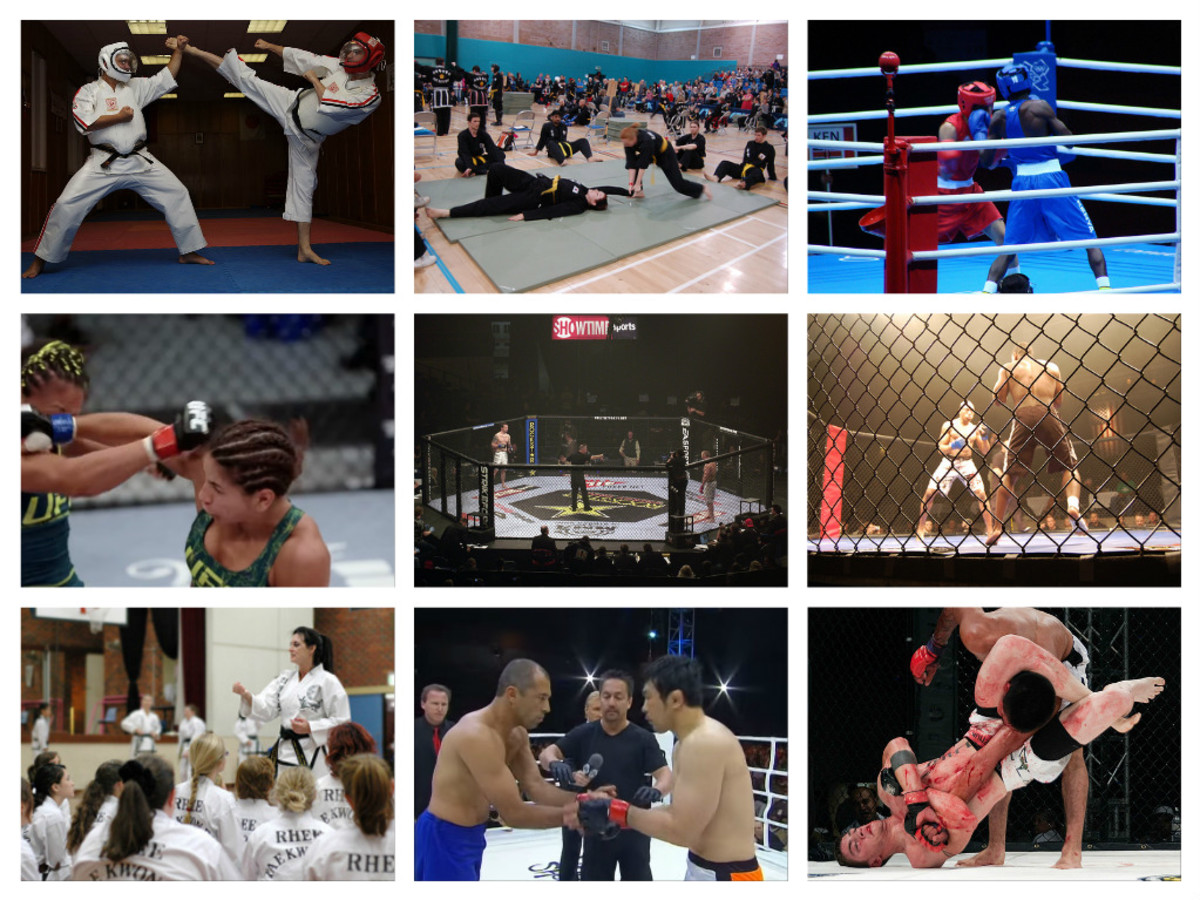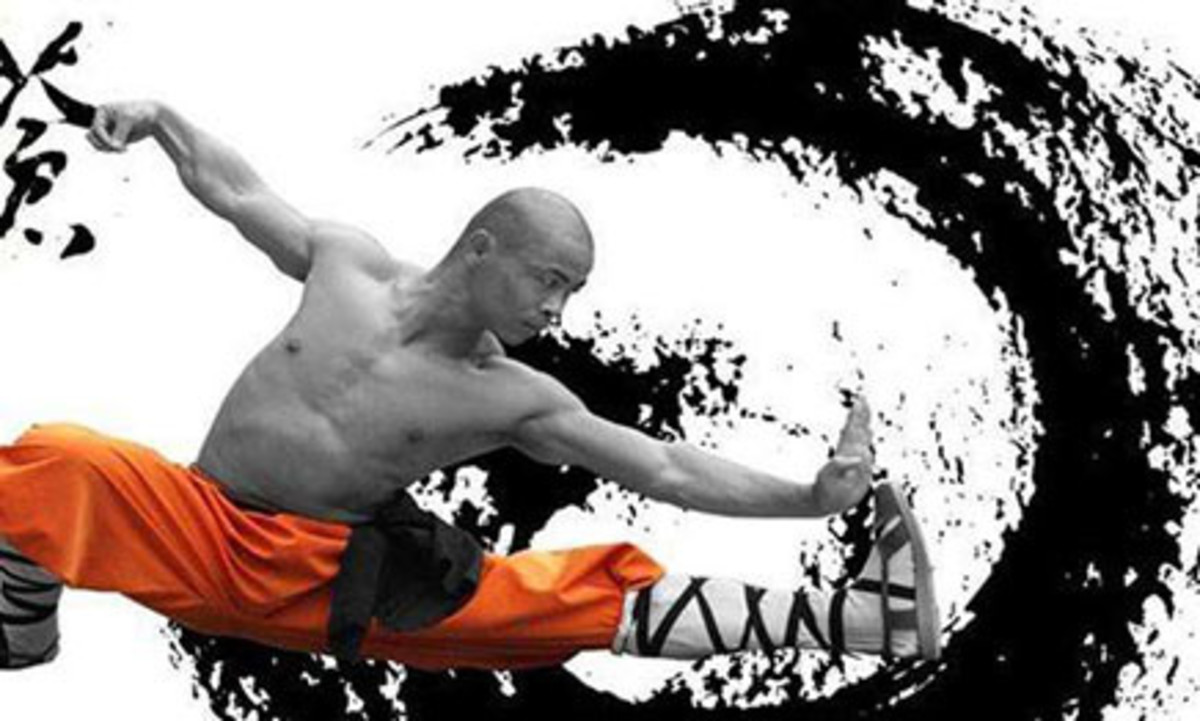How To Get Started in Martial Arts
Know yourself, and know your style.
If you want to get started with a martial arts program there are a lot of things to consider before diving right in. The first thing you have to ask yourself is what you want to get out of it. Are you looking for practical self-defense? Do you want to get into better shape? Perhaps you watched a lot of Kung Fu back in the day and you want to live the martial arts philosophy. Whatever your reasons it helps to know enough about yourself first before you commit to any one particular style or art.
If you're interested in martial arts for fitness reasons you could probably get away with joining one of the classes offered at your gym. Oftentimes these are not "real" martial arts, but cardio-kickboxing type classes, and can be very useful for burning fat, toning up, and staying fit. At times these classes will be pretty faithful to the original martial art, and they generally consist of kickboxing and jujutsu variations. But if you want to learn a martial art you're gonna have to go to a training school or studio, sometimes referred to as a "dojo" depending on the style.
The benefits of joining a school as opposed to merely taking a course at your local gym are substantial if you really want to dive into an art form. You're surrounded by people who have likely committed a large part of their lifestyle to this pursuit, and being around such people is not only rewarding, but encouraging. I always think of my training partners as friends, a second family, as well as part of a much larger community of martial arts enthusiasts. If this is more for you, then please read on and we'll try to find a style that suits your purposes.
Now you should be asking yourself what you want to be able to accomplish with martial arts training. Do you want to be able to defend yourself? Check out Krav Maga, Hapkido, and Jeet Kune Do schools. Are you interested in developing a martial arts style for traditional, cultural, or spiritual reasons? Look into traditional Kung Fu, Shotokan Karate, or Wing Chun schools. If you want to get into full-combat fighting you can look for MMA, or mxied martial arts, programs in your area, as well as Muay Thai kickboxing.
There are a myriad of styles, which range from focusing externally or internally, hard and soft, grappling versus striking... the possibilities are only limited by the number of schools in your area. So assess your body type, and determine what you think you would excel at. Here are some guidelines:
A lot of you might be smaller, for example, and want to know how to defend yourself against larger opponents. Maybe you want a little more confidence. Small, skinny, scrawny, short... luckily none of this really matters in a lot of styles. Let's take Aikido, for instance, roughly translated from Japanese it means "the Way of Harmony." Most of the art is based on defensive throws and locks which use your opponent's momentum against him. I've witnessed the smallest of my students throw the largest of opponents once they learn how to apply these methods. Often these are referred to as "grappling" arts.
Grappling arts include throws, locks, take-downs, and pins. For smaller practitioners it is useful to know a lot of throws and locks, as you can easily manipulate an opponent's momentum and use it against them... especially since most of these opponents will be much larger than you. Grappling arts are also great for larger individuals who can use their stockier build as a fulcrum for a lot of take-downs, and once on the ground it can be more difficult for an opponent to out-leverage you. The great thing about martial arts is their versatility. A grappling art for a smaller practitioner works wonderfully because he can use the opponent's momentum against him. For larger opponents their natural stability can provide an advantage.
Some examples of grappling arts are Judo, Jujutsu, Aikido, Brazilian Ju-Jitsu, and Hapkido. Each one of these arts has a national and international organization whose website you can access for more in-depth information as to the differences between these styles.
Now if you're not much into grappling and you want to learn some of the striking arts there are plenty of those out there. Again, assess your body structure and try and determine what you would be good at. Tall with long legs? Check out Muay Thai or Taekwondo. You could probably benefit from learning some amazing kicks to take advantage of your reach. Too short for that? Not to worry. Wing Chun, Karate, and Jeet Kune Do can help. You can always get in close with some punches, elbows, and knees to throw off a taller opponent with greater reach.
Striking arts are very common. Most people immediately think of Karate orTaekwondo, but there are a vast array of styles out there. These can inclue Kung Fu (of which there are many varieties), Muay Thai and other kickboxing styles, and Capoeira just to give you some examples.
Not into fighting? Not to worry. A lot of internal styles exist for one's mental and spiritual development. You've probably all heard of Tai Chi, and this is an example. Martial arts training can be very internal, and meditation is a wonderful way to learn techniques to improve focus or to seek personal enrichment.
There are also a lot of weapons styles available to you if you, like me, can't get enough of the Crouching Tiger style movies. These range from stick fighting arts such as Kali, sword fighting arts like Iado, or mix and match weaponry. Other styles, such as Krav Maga, are excellent as self-defense training against guns and/or knives. So if weapons excite you, there are plenty of opportunities awaiting
You'll generally find that when you find a martial arts style and find a couple schools offering it that they also teach other styles. The advantage of this is that you're not limiting yourself to one fighting style. If you go to your local Karate dojo you'll often find that on other nights they teach some grappling arts. I strongly encourage you to try a bit of everything. Learning as many techniques as you can not only allows you to take advantage of many common situations that will arise in a self-defense situation, but you will also be training different parts of your body and becoming much more physically fit.
.
Choosing a school that's right for you.
There are as many types of martial arts schools as there are arts themselves, if not more. Basically you have a variety of schools that cater towards what your needs are. There are those that focus on fitness, some are geared towards competitions. Others are geared towards families and offer a lot of children's classes. Some are traditional and strive to teach the art as it has been handed down for centuries. Again, ask yourself why you are looking and then try and assess each school by arranging a visit and talking to the instructors.
Once you decide on a martial art that's right for you and the type of school you wantit's time to hit the pavement... or the internet and/or Yellow Pages, for starters. Search various directories for schools in your area. Most schools will offer a free trial course so you can come in and see what it would be like. This is a great opportunity for you to not only take a class to test out the art, but to get to know the other students and the instructors. Ask as many questions as you can and really try and get a good feel for each school you visit. Ultimately, you'll probably be paying some money to join this community and you want to make sure it's a proper fit for your lifestyle. If a school doesn't allow you to take an introductory course for free, or if you don't get a good feeling from it then simply walk away and head to another.
I also recommend asking about all the fees and costs associated. Costs can range anywhere from $50 to $150 a month, and this generally includes three lessons a week. But prices can vary greatly, and are not always a reflection of quality! I would suggest finding out if they are nationally accredited to teach that style, and these schools are often held to the standards of that organization. This usually comes with a one-time or yearly registration fee for the student, however, but it is probably not much and worth the cost. You're probably going to have to buy a uniform as well, and these can range in price as well but are generally around $60.
Some final thoughts.
Ultimately, learning a martial art is a path. This path can be as long or as short as you want it to be, and as difficult or easy as you require. Once you realize what type of style you're looking for then it's just a matter of time until you find a school that matches your goals and you feel comfortable joining.













